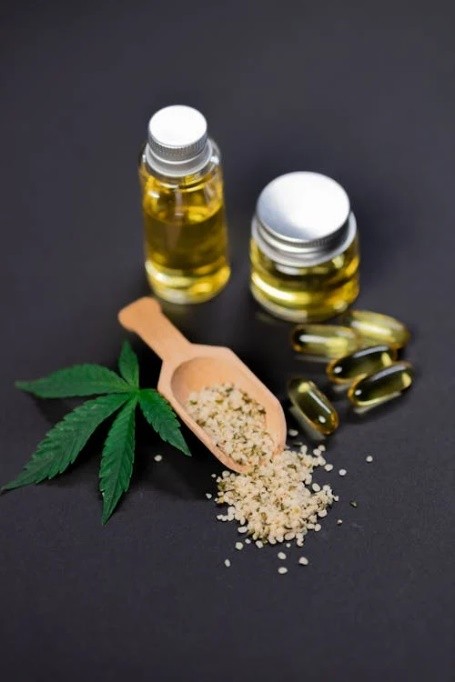Cannabis is renowned for its variety of aromas and flavors, but what makes each terpene strain profile unique? The answer lies largely in terpenes. These organic compounds, responsible for the distinctive smells of different cannabis strains, play a crucial role in the plant’s development and impact on consumers.
Understanding the lifecycle of terpenes from seed to harvest and beyond can provide insight into their significance in cultivation and consumption.
Read on as we explore the terpene lifecycle in cannabis, beginning with its origins in the seed and following through to its presence in the final product. Whether you’re a cultivator, connoisseur, or curious observer, this guide will unravel the mystery of terpenes and their transformative journey.
1. What Are Terpenes?
Terpenes are volatile compounds found in many plants, including cannabis, and they are responsible for the plant’s fragrance. They serve as a defense mechanism against pests and environmental stressors while also attracting pollinators.
In cannabis, terpenes are responsible for the scent and influence the effects and therapeutic benefits of the plant. Each unique terpene strain profile contributes to the overall experience, from calming lavender-like notes to invigorating citrus scents.
Terpenes interact with cannabinoids, like THC and CBD, in a phenomenon known as the “entourage effect.” This interaction enhances or modulates the effects of cannabis, making the terpene content a vital aspect of cannabis quality and potency.

2. Terpenes in the Seed Stage: The Genetic Blueprint
The terpene journey begins in the seed. Cannabis seeds contain the genetic information that determines the terpene strain profile the plant will develop.
Each strain has its own blueprint for the quantities and types of terpenes it will produce, influenced by genetic and environmental factors. While the seed itself doesn’t yet contain terpenes, it sets the stage for how they will emerge as the plant grows.
Growers often choose seeds based on the desired terpene strain profile, as certain terpenes are linked to specific effects or medical benefits. Therefore, the genetics of the seed play a crucial role in determining the plant’s overall terpene content and diversity.
3. Terpene Development During Vegetative Growth
As the cannabis plant progresses from seed to seedling, it enters the vegetative growth stage. During this period, the plant focuses on growing stems, leaves, and roots, but terpenes begin to form in small amounts. The production of terpenes at this stage is minimal and primarily geared toward deterring herbivores and protecting the plant from environmental stress, such as UV rays.
Though the terpene profile isn’t fully developed during vegetative growth, the plant’s health and exposure to light, temperature, and nutrients during this phase can impact the eventual production of terpenes. Growers who maintain optimal conditions ensure the plant will have a solid foundation for terpene production later in the lifecycle.
4. Terpenes in the Flowering Stage: Full Expression
The flowering stage is when terpene production kicks into high gear. As the cannabis plant starts to produce buds, the trichomes (small resin glands on the surface of the buds) become the epicenter of terpene development. Trichomes produce cannabinoids and terpenes, which give the buds their signature scent and therapeutic potential.
Environmental factors such as temperature, humidity, and light are significant in terpene development during this phase. Excessive heat can degrade terpenes, while optimal growing conditions help ensure a rich and diverse terpene strain profile. Strains with fruity, floral, or earthy scents owe much of their character to the terpenes produced during flowering.

5. Harvest Time: Preserving Terpenes
The timing of the harvest is critical to preserving terpenes. Terpenes are highly volatile and can degrade quickly if the plant is harvested too late or exposed to excessive heat. As the plant approaches maturity, terpenes are at their peak concentration, and growers must carefully monitor the trichomes to ensure the right moment for harvest.
Cutting the plant at the right time preserves the delicate terpene profile, which is essential for maintaining the desired flavor, aroma, and effect of the strain. Many experienced cultivators base their harvest time on the coloration of the trichomes, looking for a milky or amber hue, which signals peak cannabinoid and terpene production.
6. Curing and Drying: Enhancing Terpene Profiles
After harvest, cannabis plants undergo a curing and drying process. This stage is crucial for preserving and enhancing the terpene strain profile. Proper drying removes moisture without exposing the plant to heat, which could degrade terpenes. Curing, which involves storing the buds in controlled conditions over a period of weeks, allows the terpenes to fully develop and stabilize.
During curing, chlorophyll breaks down, and the buds’ flavors and aromas become more pronounced. This stage allows growers to unlock the full potential of the terpene strain profile, ensuring a smooth, flavorful smoke or vapor for consumers.
7. Extraction: Capturing Terpenes in Cannabis Products
In addition to smoking or vaping cannabis flowers, many consumers use products such as oils, edibles, and concentrates, which require extraction processes to isolate cannabinoids and terpenes. Some extraction methods, such as CO2 extraction, preserve the terpene strain profile, while others, like butane extraction, may strip away some of the terpenes.
To maintain the full therapeutic potential of the plant, it’s important to use extraction techniques that preserve the terpene profile. Full-spectrum extracts aim to retain the natural balance of cannabinoids and terpenes found in the plant, offering a more holistic experience compared to isolates that contain only THC or CBD.

8. Terpenes in Storage: Maintaining Potency
Once cannabis is cured and prepared for sale, proper storage is essential to maintain the terpene content. Terpenes can degrade when exposed to light, heat, or air, which is why it’s important to store cannabis in airtight, light-proof containers. Vacuum-sealed glass jars or containers with UV protection are ideal for preserving terpene-rich cannabis over time.
For consumers who want to enjoy the full spectrum of effects, it’s recommended to store cannabis in cool, dark places to prevent the loss of terpenes. Poor storage can lead to a diminished aroma and flavor, affecting the product’s sensory and therapeutic experiences.
9. Terpenes and the Future of Cannabis
As the cannabis industry continues to evolve, terpenes are gaining attention for their potential benefits beyond smell and taste. Researchers are exploring how terpenes interact with cannabinoids to enhance the therapeutic effects of cannabis. This growing interest is leading to the development of more sophisticated cannabis products, such as terpene-enriched concentrates and terpene-specific edibles.
The future of cannabis is likely to see a greater emphasis on terpene content, with consumers becoming more aware of how these compounds shape the overall experience. As knowledge of the terpene lifecycle expands, cultivators and consumers will benefit from a deeper understanding of what makes each terpene strain profile unique.
Unlock the Power of Terpenes with Gold Coast Terpenes!
Discover the fascinating world of terpenes and enhance your cannabis experience! At Gold Coast Terpenes, we offer a wide range of high-quality terpene strain profiles to elevate your products, ensuring the perfect aroma and flavor.
Whether you’re a grower, manufacturer, or enthusiast, our expert team is here to guide you in harnessing the full potential of terpenes. Explore our selection of terpenes for sale and transform your cannabis journey!
